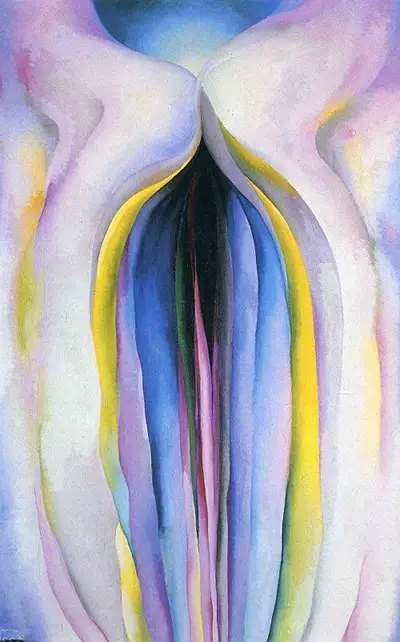These lines come in different widths, but they all converge at some point at the top of the image, creating an hour glass shape. These lucid lines show some form of depth have had various means since it was created. Some people argue that the image represents plant life, especially a cross-section of a flower during the formation of the fruit. However, others think it represents the anatomy of female reproductive organs. The painter did not give a meaning to the mage and there is still raging debate on the subject.
Style of the Image
Georgia used the Precisionist style of painting to create this masterpiece. This style of painting was characterised by well-defined, smooth creations. Objects could be defined with ease by just looking at the image. Much of the detail in this style was derived from Cubism. However, unlike Cubism, painters had the freedom to add some bit of dimension to their creations. The style also borrowed heavily from futurism with effects such as dynamism, energy and movement.
In Gray Line with Black, Blue and Yellow, one of the most striking features is the use of geometry. Despite being an abstract image, viewers can define ovular and circular shapes in the image. Geometry is key to delivering the message by just looking at face value. This style was prevalent in 1920 to 1940s, the period within which this masterpiece was created. Other artists that have used a similar style include George Ault, Stuart Davis and Joseph Stella.
The Genre of the Image
The genre of this masterpiece is abstract art. This is because the image is non-representations, non-figurative and non-objective. It is rather vague in its description. While the image can be abstract, that does not mean that it does not have any significance. Most of the time, there are hidden meanings and thought processes behind such pieces.
In the case of Georgia’s artwork, whether it talks about the anatomy of woman's reproductive organs or the formation of fruits, it all represents the beauty of life. Critics have taken the painting as a representation of the womb, a point where new life comes to be. (The same case with a flower on a plant) The use of different colours may have been to enhance its aesthetic quality and make it easier for readers to differentiate different lines and make out the shape of the object.
